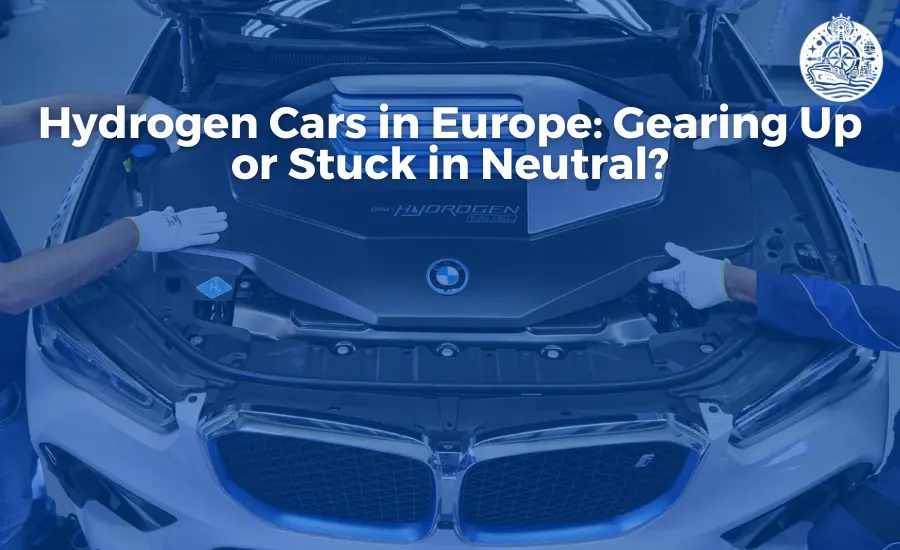
Despite promises of a clean and sustainable future, the European landscape for hydrogen cars paints a complex picture. While hundreds of new hydrogen refueling stations are planned, new vehicle registrations remain stagnant across most markets. This article delves into the current state of hydrogen cars in Europe, exploring the underlying reasons for the slow adoption, examining the potential of upcoming infrastructure expansion, and evaluating the overall prospects of this technology in the region.
A Stalled Engine: Flatlining Registrations Raise Concerns
According to a recent Hydrogen Insight investigation, new hydrogen fuel cell vehicle (FCEV) registrations across most European markets have plateaued, despite efforts from various automotive companies to bring new hydrogen models to market. This stagnation stands in stark contrast to the optimism surrounding hydrogen just a few years ago, raising questions about the technology’s true potential in the region.
Several factors contribute to this slowdown:
- Limited Infrastructure: The availability of hydrogen refueling stations remains a major hurdle. While hundreds of new stations are on the horizon, the current network is sparse, particularly outside major cities, creating a significant barrier for potential buyers who worry about range anxiety.
- High Cost: Hydrogen cars are typically more expensive than their gasoline or electric counterparts, both in terms of purchase price and fuel costs. This price premium discourages many consumers from opting for this technology.
- Uncertain Future: Concerns regarding the long-term viability of hydrogen technology compared to rapidly evolving battery-electric vehicles (BEVs) create hesitation among some potential buyers.
Fueling the Future: Hundreds of New Stations on the Horizon
Despite the current challenges, significant efforts are underway to expand hydrogen infrastructure across Europe. The European Union has mandated the construction of hundreds of new hydrogen refueling stations by 2027, aiming to address the network’s limitations and boost FCEV adoption.
This expansion offers several potential benefits:
- Increased Convenience: A denser network of stations would alleviate range anxiety and make hydrogen cars a more viable option for daily use, potentially attracting more buyers.
- Wider Geographic Reach: Expanding beyond major cities would enable drivers to travel longer distances using hydrogen, opening up new possibilities for this technology.
- Economic Opportunities: Investment in infrastructure creates jobs and stimulates the growth of the hydrogen industry, leading to positive economic impacts.
However, questions remain:
- Will the planned infrastructure rollout be sufficient to meet the needs of a growing FCEV fleet?
- Can the costs associated with building and maintaining new stations be kept manageable?
- Will the infrastructure expansion happen fast enough to keep pace with the evolving automotive landscape?
Shifting Gears: Assessing the Long-Term Outlook
The future of hydrogen cars in Europe remains uncertain. While the planned infrastructure expansion offers a glimmer of hope, several hurdles need to be overcome for this technology to gain mainstream traction.
Here are some key factors to consider:
- Technological Advancements: Continued advancements in FCEV technology, leading to lower costs and improved performance, could make hydrogen cars more competitive with other options.
- Government Policies: Supportive policies and incentives from European governments can play a crucial role in driving consumer adoption and accelerating the transition to hydrogen mobility.
- Consumer Sentiment: Addressing concerns about cost, range, and the long-term viability of hydrogen technology is essential to shift consumer preferences towards this alternative fuel option.
Ultimately, the success of hydrogen cars in Europe will depend on a complex interplay of these factors. While challenges remain, the planned infrastructure expansion represents a significant step forward. Continued innovation, supportive policies, and a shift in consumer perception are vital ingredients for hydrogen to truly become a key player in the European transportation landscape.
Beyond Europe: A Global Perspective
It’s important to acknowledge that the European scenario regarding hydrogen cars is not unique. While the continent grapples with its own challenges, other regions like Asia and California are witnessing positive developments in hydrogen adoption. Analyzing these contrasting perspectives can provide valuable insights into the global prospects of this technology.










